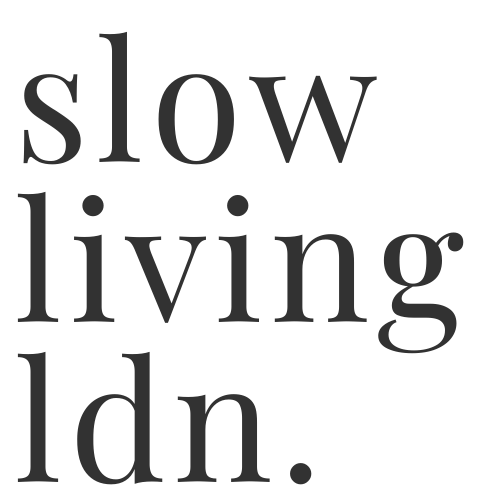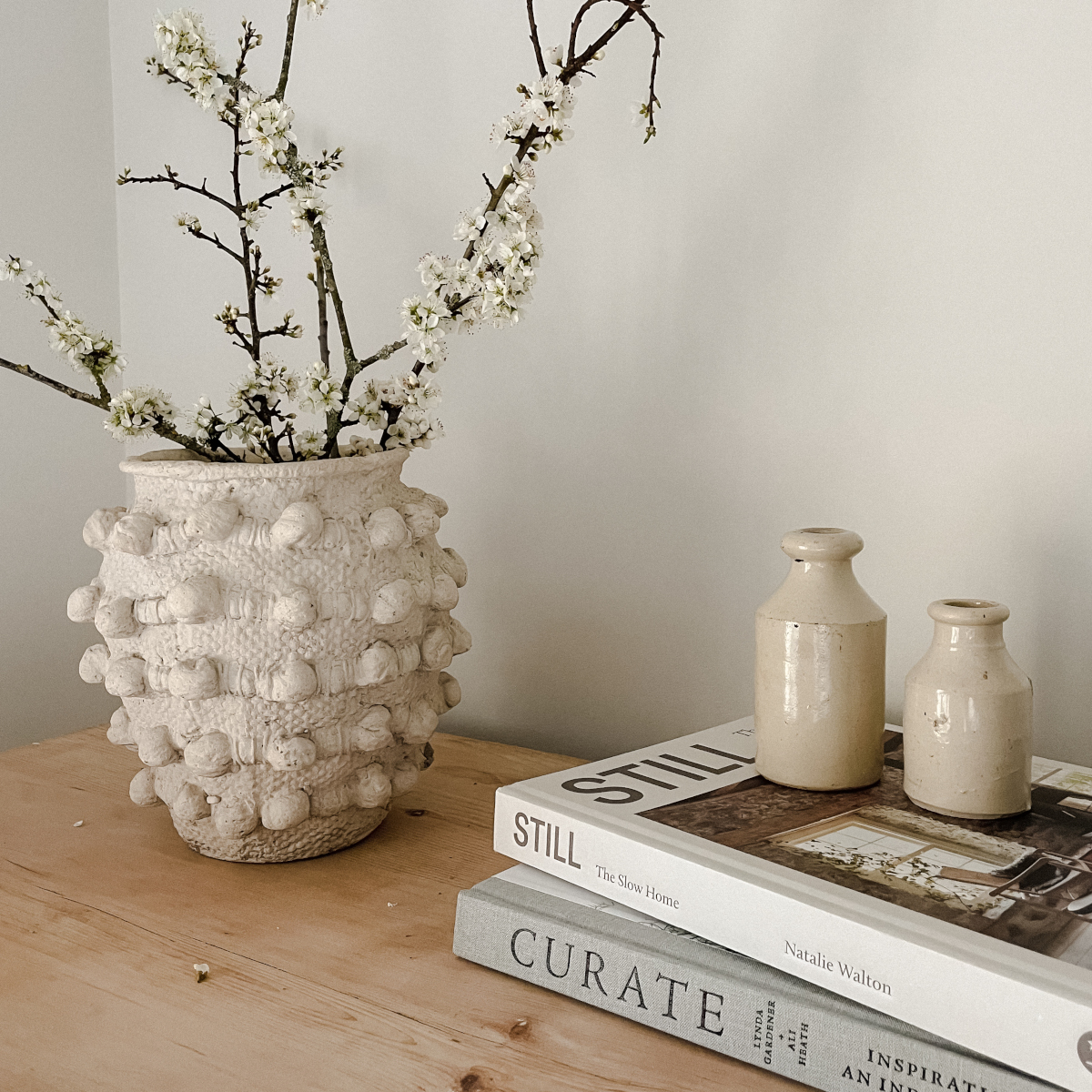You have no items in your cart. Want to get some nice things?
Go shopping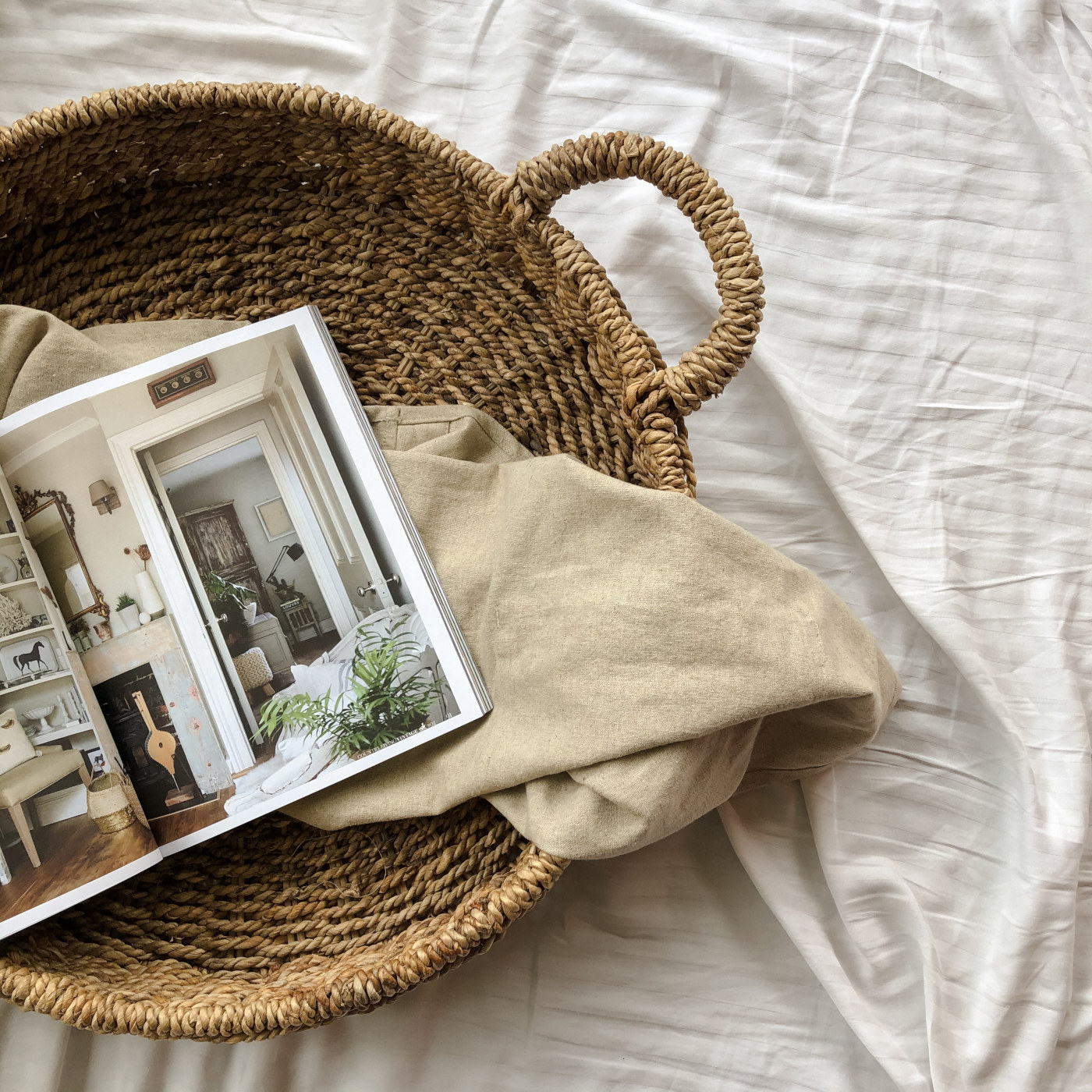
You may be here because you’ve googled ‘how to slow down’, or you’re looking for where to start when embracing a slow living lifestyle. Chances are you’ve already come across plenty of articles offering lists of things to do to help you slow down and simplify, from mindfulness practices to getting out into nature. But for us, many of these guides are centred around what we like to call ‘everyday deceleration’ and miss a very important first step in slowing down and creating lasting change. They overlook the ‘why’. That’s your reason for slowing down, and usually it’s the realisation that you’re not prioritising what’s most important to you in life.
To us, slow living is a mindset whereby you curate a more meaningful and conscious lifestyle that’s in line with what you value most in life. It’s the opposite to overwhelm and burnout. Slowing down is about living better, rather than faster, by intentionally placing what’s important to you at the heart of your lifestyle, living mindfully in self-awareness and making conscious, considered decisions for the benefit of your own well-being, and that of the environment. Slow living is about dedicating the right amount of time to the things that matter most to us.
While many of us may find the same everyday techniques useful for slowing down, such as switching off from technology occasionally, a slow living mindset is hugely personal. Since it’s based on our values, it will look different for all of us, and it’s so much more than an aesthetic on Instagram or TikTok. Below, you’ll find four essential steps for embracing a slower way of life, designed through years of research and experience exploring the slow living movement. You’ll define your slow living manifesto and feel equipped with a practical toolkit to help you slow down.
How to slow down: 4 essential steps for embracing slow living
- Shape your slow living mindset – finding your values
- Apply your slow living mindset – living by your values
- Find your daily slow living toolkit – practising moments of everyday deceleration
- Reap the benefits of a more conscious lifestyle – connecting with the wider slow living moment
1. Shape your slow living mindset
At Slow Living LDN we believe that slow living is a mindset whereby you curate a more meaningful and conscious lifestyle that’s in line with what you value most in life. Very Well Mind explains a mindset as “a set of beliefs that shape how you make sense of the world and yourself”. Your mindset influences how you navigate any given situation. Viewing slow living as a mindset elevates it to an all-encompassing way of thinking and living, rather than just a short-term trend or aesthetic.
A slow living mindset is hugely personal. It’s a more considered, conscious lifestyle that prioritises what’s truly important to you. Quite often, we find ourselves spending a lot of time doing things that distract from our purpose or what we regard to be really important. On her own journey to living a more meaningful lifestyle, Brooke McAlary, The Slow Home Podcast host and author of Slow, identified that, ‘there was an enormous disconnect between the things I valued most and my everyday actions’.
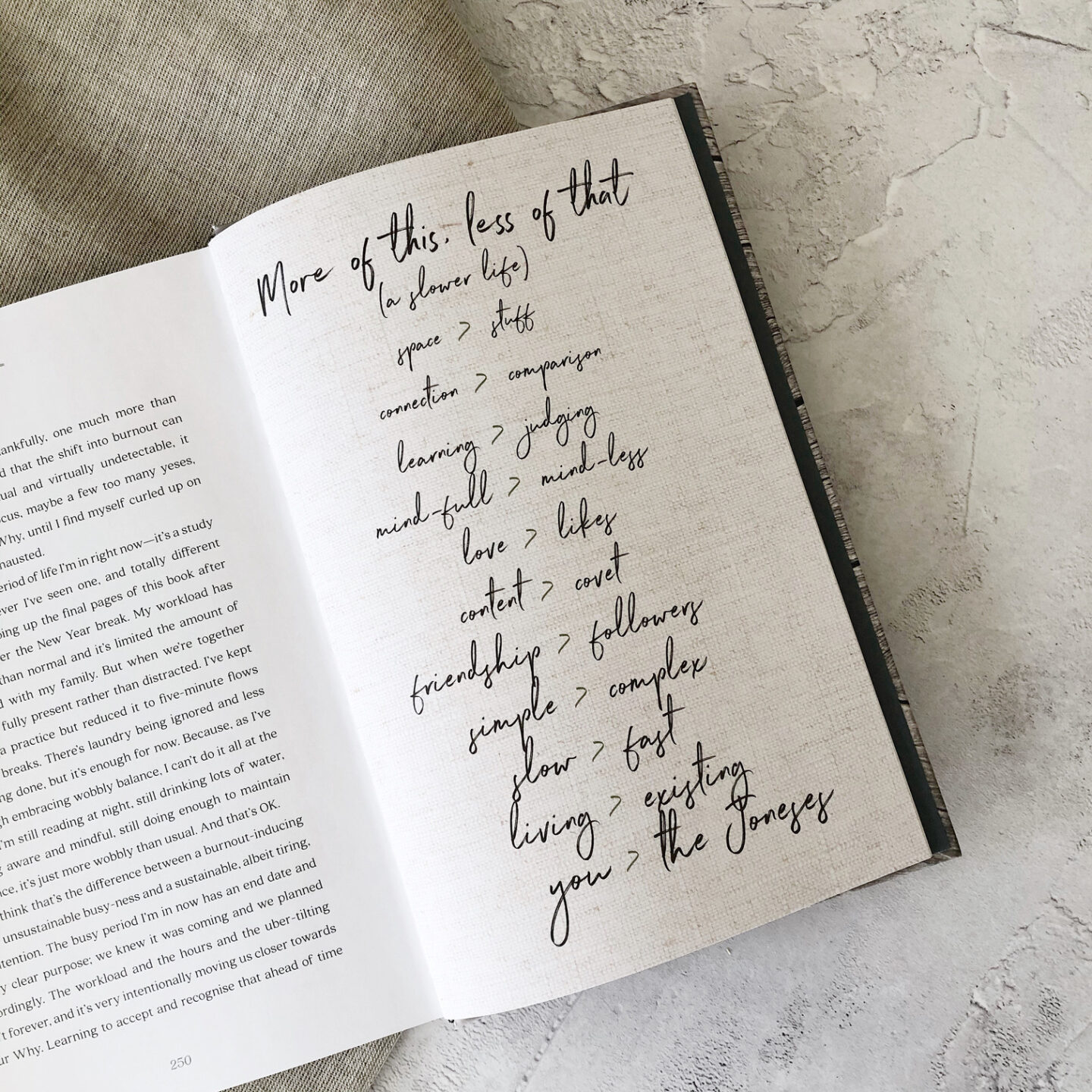
The first step when considering how to slow down is to define your slow living manifesto and shape your slow living mindset. This is your ‘why’, your reason for slowing down. Slow living isn’t a ‘someday’ mindset, it’s a way of thinking that gives you permission to start living, as much as feasibly possible, how you want to live.
To start shaping your slow living mindset, answer the below questions as honestly as possible. Note down your answers. Then, pull together common themes to help you form a couple of sentences which encompasses what’s important to you in life and what a fulfilled life really looks like. This is your slow living manifesto which underpins your personal slow living mindset. Keep it safe and revisit it, it’s your anchor and compass to help you navigate a slower, more purposeful lifestyle.
- What (and who) is most important to you?
- Where do you spend most of your energy?
- What does a life well lived look like to you?
- What do you want to be remembered for?
- What regrets do you hope to avoid?
2. Apply your slow living mindset
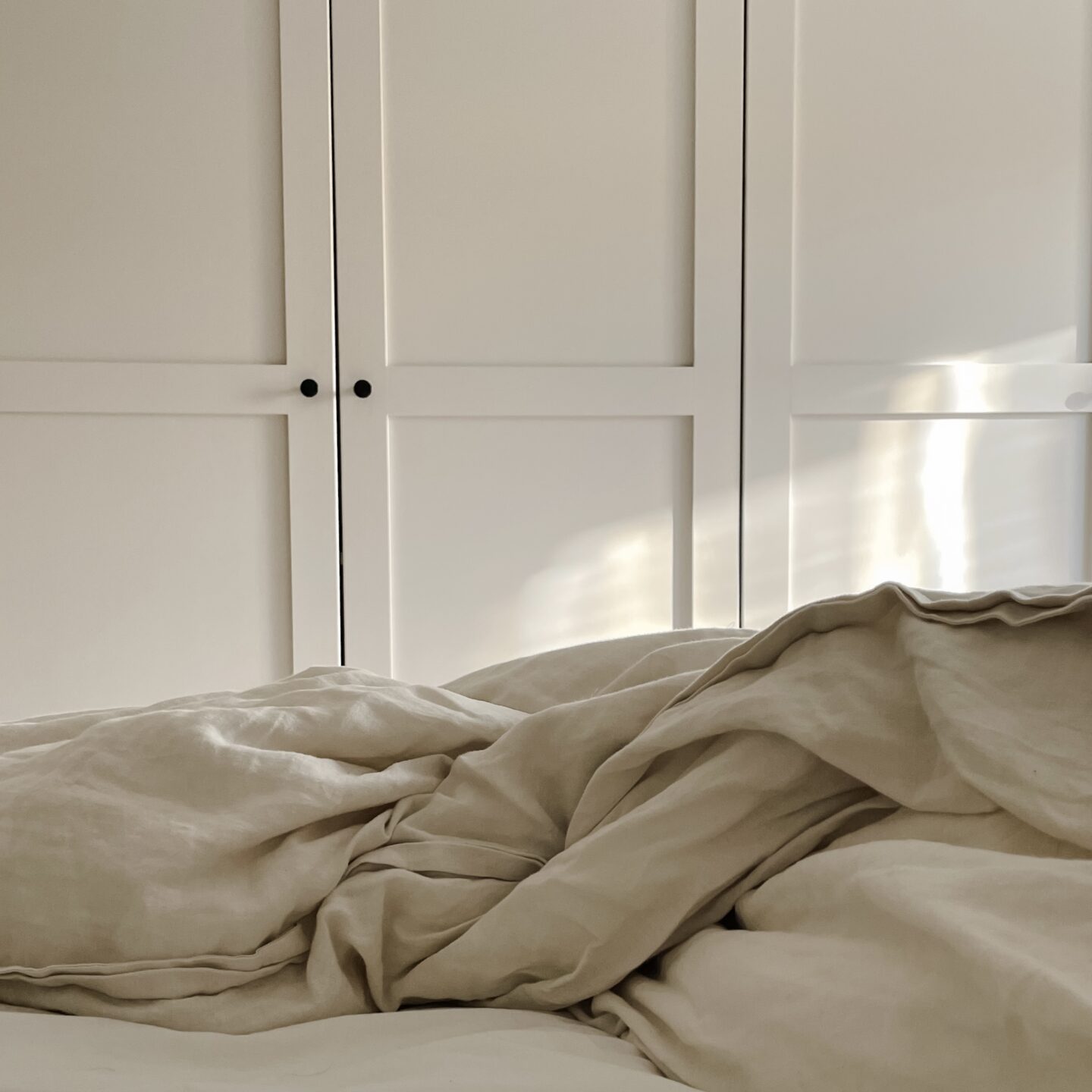
Once you’ve identified why you want to embrace a slower, more conscious and considered lifestyle, it’s time to understand what needs to change to fully adopt this mindset. Applying your slow living mindset is about:
- Simplifying your lifestyle to remove unnecessary distractions and allow more space for what matters most to you.
- Creating a home that supports slow living.
Simplifying takes the form of learning how to say no to too many commitments, stop rushing and assign the right amount of time to each task. Some use the term simplifying, while others call it minimalism and use this as a tool to start removing distractions. Giving yourself the permission to live true to yourself, rather than striving to live up to someone else’s idea of success, is an important part of applying your slow living mindset.
“Be a curator of your life. Slowly cut things out until you’re left only with what you love, with what’s necessary, with what makes you happy.”
Leo Babauta
Simplify your lifestyle
Slow living and simple living aren’t solutions that can magically remove all difficult tasks or commitments in life. However, a slower lifestyle embraces being more selective to what social plans you say yes to and reminds us to be realistic when setting ourselves tasks to complete. It’s important to not mistake busyness with productivity – we all need time to recharge. In addition, taking on a slower mindset encourages you to assign the right amount of time to each task, rather than rushing. It’s about doing less, but doing the things that matter, better.
Slow living shakes off the negative connotations of the word ‘slow’. It’s not about being lazy or unproductive, rather slow living means prioritising and going easy on yourself when it matters. None of us have mastered perfectly juggling work, friends, family, hobbies and home – and it’s ok to admit we haven’t always got it figured out.
“Slow living is a curious mix of being prepared and being prepared to let go. Caring more and caring less. Saying yes and saying no. Being present and walking away. Doing the important things and forgetting those that aren’t.”
Brooke McAlary, Slow
Create a home that supports slow living
As slow interiors champions, we also believe in the power of calm interior design and creating a home that supports slow living.
A home for slow living is a carefully curated collection of spaces where you can be authentically you and find calm and connection. A home for slow living: embodies a quiet escape from today’s fast-paced world. reflects your personal style, identity, values and personality.
Read more
3. Find your daily slow living toolkit
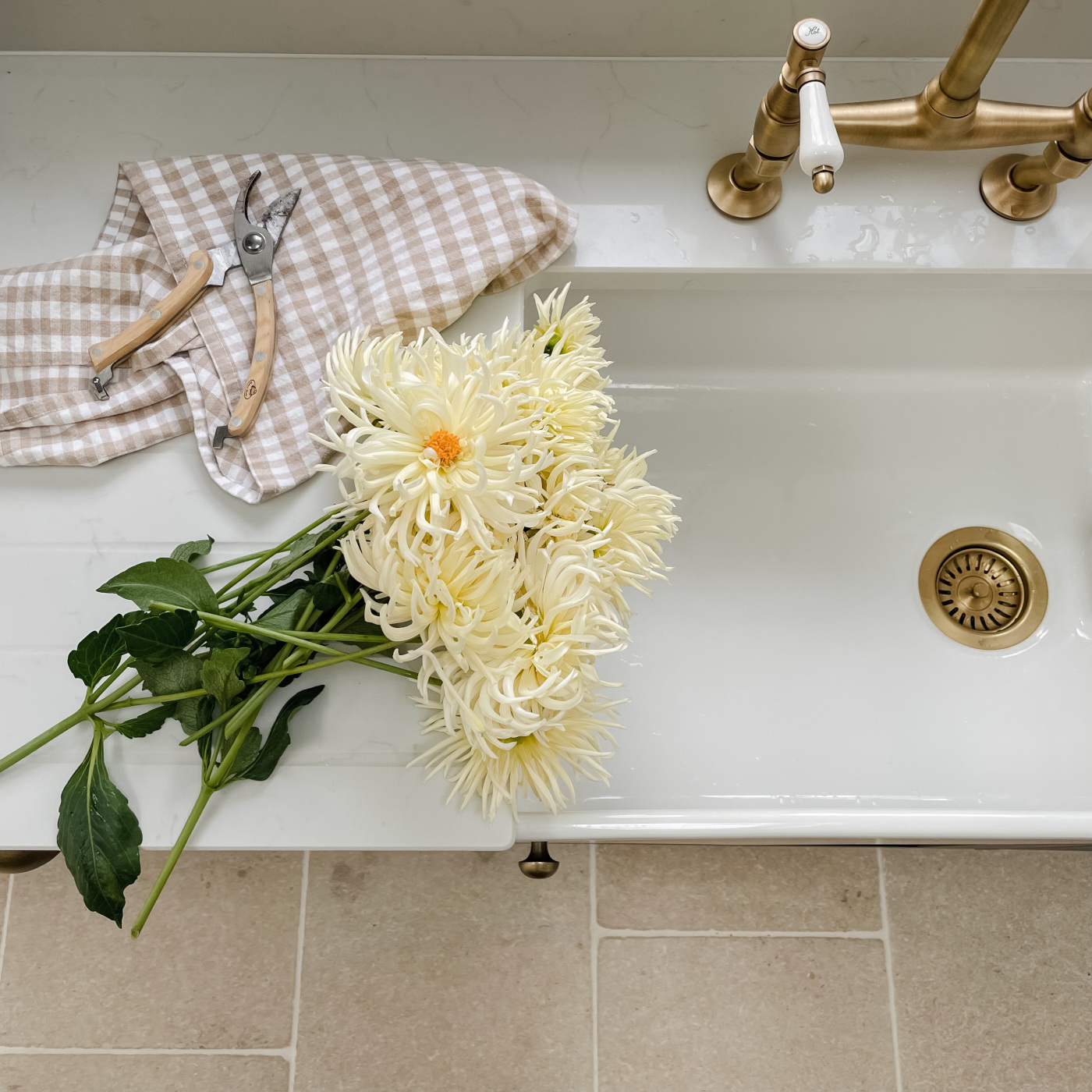
Our best intentions to live by our slow living mindset and values can quickly fall away when we’re stressed and tired. To help you remain anchored to what’s important to you, even when life feels frantic, it’s helpful to develop your slow living toolkit. There are two essentials for your toolkit:
- Good sleep
- Moments of everyday deceleration which help to engage your ‘soothing system‘
Moments of everyday deceleration
Heading for burnout? Moments of everyday deceleration are small pauses in your day which encourage you to switch off autopilot and become more mindful. These pauses help you find perspective and engage your soothing system. Our soothing system is one our emotional regulation systems. It’s essential for alleviating stress and promoting contentment, rest and connection. When we’re stressed, we’re favouring our threat and drive systems and the intense cortisol and dopamine hormones which accompany them.
Mindfulness, digital downtime or digital minimalism, creativity and time spent reconnecting with nature and the seasons are all great examples of moments of everyday deceleration. A common misconception of mindfulness is that you need to carve out lots of extra time to practise. Yet, mindfulness can be as simple as re-framing mundane activities that you do every day, such as making a cup of tea or hanging out the washing.
“The great benefit of slowing down is reclaiming the time and tranquillity to make meaningful connections–with people, with culture, with work, with nature, with our own bodies and minds”
Carl Honoré, In Praise of Slowness: Challenging the Cult of Speed
Our always-on culture can also make it increasingly more difficult to live in the moment. Social media depicts highlights from friends and acquaintances that can induce FOMO (the fear of missing out) and create feelings of inadequacy. The pressure to document our own highlights also draws us away from the present moment and reduces meaningful real time connections with the people we’re with or the places we’re spending time in. When embracing moments of everyday deceleration, it can be helpful to switch off from technology and other distractions for a few minutes.
Simple examples of moments of everyday deceleration:
- Cooking or baking
- Going for a walk in nature
- Reading
- Taking a bath
- Writing a letter or card to someone
- Arranging cut or dried flowers in your home
- Doing something creative with your hands
- Mindful breathing or meditation
- Tending to houseplants or a garden
- Journaling
- Exercise
Read more
4. Reap the benefits of a more conscious lifestyle
There are many benefits of slow living, including finding fulfilment and purpose, building stronger relationships and experiencing being more present. However a slow living mindset also encourages you to tap into the ethos of the wider slow living movement and make conscious, purposeful decisions not just for the benefit of your well-being, but also for that of the planet. The aim, or benefit of slow living in this sense, is becoming more engaged with how and what we consume.
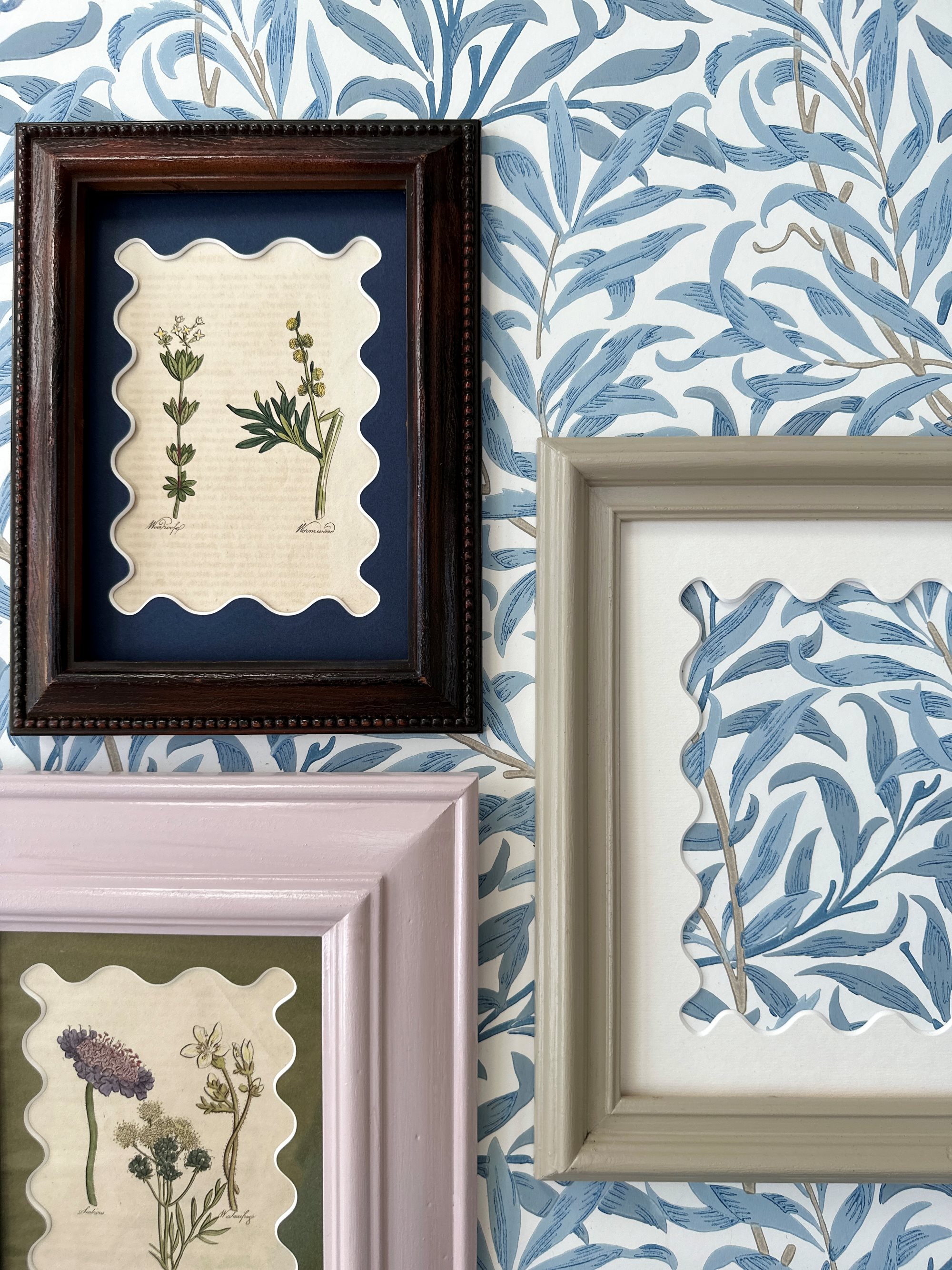
Have you visited the Slow Living LDN. shop?
Discover our UK-made products and curate your home for slow living.
Rather than rushing to purchase when we do need something, slow living means taking the time to understand how an item was made and striving for the most sustainable option. We become engaged with where our products come from and aim to make meaningful connections with the people and places around us. When we can, we celebrate the time and craftmanship that goes into handmade items and try to shop more locally or seasonally. We explore the benefits of spending time in nature and embracing seasonal living, both for our well-being and for our awareness of our own impact on the environment.
We can also bring some of the main areas of the wider slow living movement into our outward facing notion of living consciously. Some of these are slow food, slow fashion, slow interiors, slow travel and slow gardening.
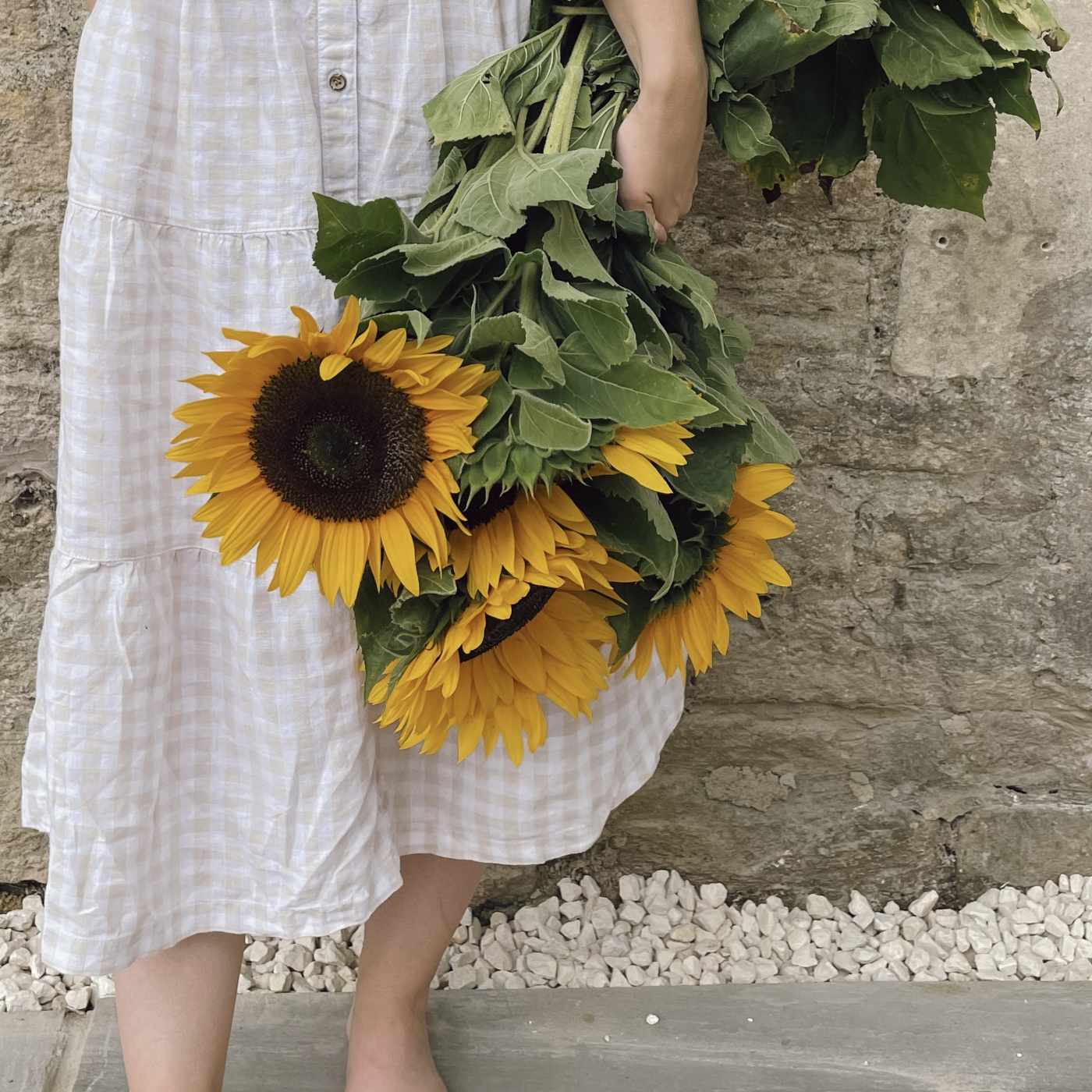
Slow food
- Slow food means a chance to enjoy the mindful process of cooking from scratch
- An opportunity to support local producers and value their craft and heritage
- A focus on eating seasonally
Slow interiors
- Slow interiors means creating a conscious home, embracing slow design, and reflecting on the sustainability and provenance of materials used
- Planning considered interiors projects with the aim of crafting a home for longevity that reflects the needs of its inhabitants, rather than focusing on transient trends
- Embracing quality in the craftsmanship of furniture and home décor items
- Adopting a make do and mend attitude and embracing the meaning of wabi-sabi (a Japanese concept for accepting the imperfect) and buying second-hand furniture
Slow travel
- Slow travel means a mindful approach to travel that focuses on real cultural connections beyond must-see attractions
- The recognition that the journey is also an important part of the experience
- An opportunity to reconnect with our natural surroundings
Slow gardening
- Slow gardening means a focus on personal and environmental well-being through the process of gardening, rather than instant gratification
- Seasonal living and finding enjoyment in the garden at all times of the year
- A deeper connection to the natural world, where our produce comes from and our local environment
Further inspiration on living slower
- Read our guide to what is slow living and a brief history of the slow movement.
- Take a look at our slow living books reading list and follow the Slow Living LDN. book club.
- Reflect on our summary of slow living lessons from Brooke McAlary’s Slow.
- Get inspired by our curated list of slow living quotes.
- Learn about minimalism.
- Browse our list of independent and slow living magazines.
Let’s live better, not faster.
